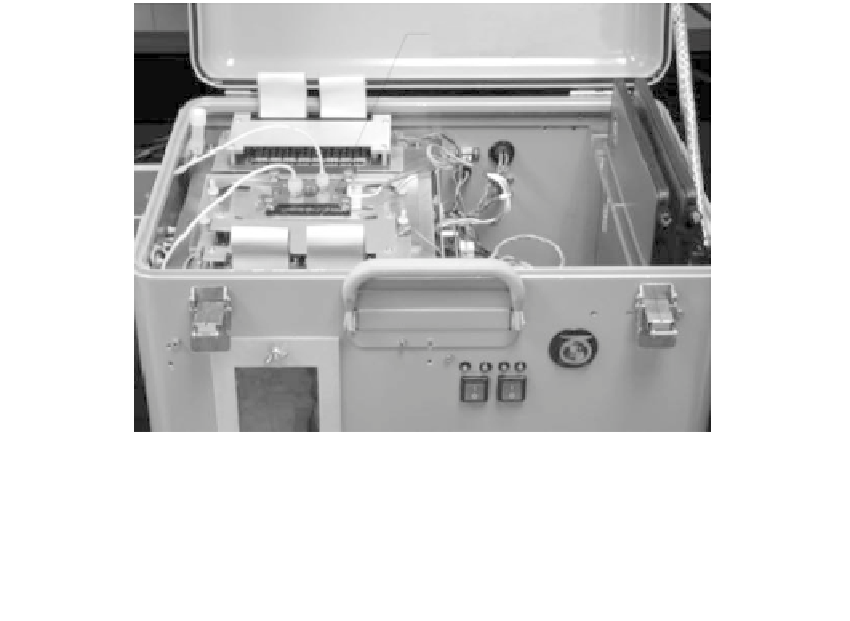Biomedical Engineering Reference
In-Depth Information
instrumentation: developing portable amplifiers and electrode arrays suitable for extracel-
lular recording with limited demonstrations with spontaneously active cardiac cells. More
recently, the NRL has worked closely with the UNT to develop the first portable recording sys-
tem for cultured neuronal networks as shown in Figure 6.20 [8]. It was through the recogni-
tion that the elements of the engineering design had to be driven by the practical issues of
handling and maintaining cultured neuronal networks. As a result, this prototype system
has been designed specifically to accommodate the UNT neuronal network format in a man-
ner conducive to cell-culture handling, while providing robust control of temperature and
flow conditions as well as low noise recording of microvolt-level extracellular potentials.
Recording levels are virtually identical to those achieved with laboratory-based systems.
The robustness of the cultured networks led to a concept of use where the biological
component could be shipped to end users and treated as modules for the portable system.
Moreover, with the use of a standard, the capacity to compare results derived between the
laboratory and field settings can be realized. This has been a major issue limiting the adop-
tion of cell-based biosensors for environmental threat detection. No advance in engineer-
ing will circumvent the need to build a library of response profiles for characterization of
system sensitivities or eventually threat classification.
The other aspects of the portable recording system are driven by the need for simplic-
ity: feedback-temperature-control unit that inserts stainless steel housing into the culture
module; fluidic interconnects where media is prewarmed to ensure temperature stability;
and a software user interface that allows recording to be initiated immediately without
delineation of units. In fact, our experience has been that unit discrimination for environ-
mental threat detection has had only marginal influences on the estimations of EC
50
val-
ues (Figure 6.21) and often has had little impact on threat detection. The user interface
displays neuronal network activity at multiple time scales: microsecond resolution to
display the digitized waveforms over three user-selected and modifiable channels, per-
second resolution where supra-threshold spikes are counted and displayed as a false color
Neuronal network
recording chamber
FIGURE 6.20
Portable system for field use tailored to monitoring neuronal extracellular potentials. The system incorporates
standardized microelectrode arrays developed by and in use at the University of North Texas. Wherever possi-
ble, off-the-shelf components have been utilized for system design and fabrication. Key components of the sys-
tem include low-noise amplifier and filter boards, a thermal control system with integrated fluidics to minimize
perturbations in temperature under flow conditions. Data collection and processing can be accomplished in real
time using a personal computer running a graphical user interface for data acquisition and control (not shown).


